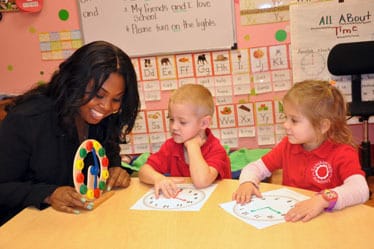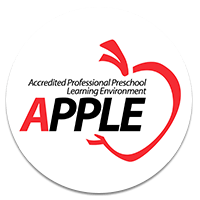
Julia Yaremchuk, M.S in Education
I. Publication Information
A. Ages and Stages Questionnaire
The title of the first assessment is called the Ages and Stages Questionnaire or ASQ, Third Edition and it was developed “in the 1970s. Researchers at the University of Oregon, led by Dr. Diane Bricker, recognized the need for economical, valid, and culturally sensitive screening tools to identify young children who might be at risk for developmental delays” (ASQ, 2012).
The recommended age range of the Ages and Stages Questionnaire is 3 to 60 months of age in children. The assessment is used for both parents and educators to assess the progression in children and also make sure that the early signs of special needs are not seen in each appropriate three month interval to which the assessment is based on.
The assessment is used by many public and private schools, along with parents and educators. However, the reliability and validity of the assessment is more prevalently seen through its work with HEAD START programs. “The ASQ system helps your program meet every requirement established by the Head Start Program Performance Standards, such as providing culturally sensitive, age-appropriate developmental and behavioral screening; actively locating children with disabilities; building collaborative partnerships with families; and providing parent involvement and education activities” (ASQ website, 2012).
There are no stated limitations of the Ages and Stages Assessment. However from the overall research that has been done, it is shown that the ASQ does not have longitudinal studies yet in effect to give an appropriate number of reliability and validity scoring measures that many prevalent assessments do have available. Therefore, even though the ASQ may work to assess children with special needs, it is not yet scientifically proven its results for early childhood settings.
B. Cindy Downes Oklahoma Home Schooling Pre-K Assessment
The assessment called Pre-K Assessment copyrighted by Cindy Downes of the Oklahoma Home Schooling system has a myriad of ways to assess children in their pre-reading and pre-writing abilities. The publisher works on a systematic approach which shows where children are prior to starting the thematic unit approach to the preschool curriculum.
The recommended age for the Pre-K Assessment copyrighted by Cindy Downes is for children ages 4 years before September 1 of the school year. There is no stated purpose of the assessment, yet the author was asked to explain via email the standardization and scope of background used to develop the exam.
There are no stated limitations of the Pre-K Assessment copyrighted by Cindy Downes, but one has been noted by the writer. The wording of the assessment does not take into consideration children from bilingual backgrounds and culture.
II. Description
A. Ages and Stages Questionnaire
The Ages and Stages Questionnaire is a wonderful assessment tool that is used every three month in my educational facility. The assessment allows for teachers and parents to both have a clear picture on the development of the individual child. The Ages and Stages Questionnaire is a very easy assessment to administer because the guidelines are explained very clearly for each question.
B. Ages and Stages Questionnaire Administration
The Ages and Stages Questionnaire was administered to three students, who have been in the same class from the fall season. The assessment was given at the 54 months mark. One student was bilingual in English and Russian, the second was bilingual in English and Hebrew and the third student was bilingual in English and Spanish.
The exams were given as a pullout procedure over a course of two days at the same time, from 9:30-10:30 am. The children were given ample time to answer all the questions.
C. Results for Ages and Stages
-
- Bilingual English/Russian- Speaking Student
In the communication portion of the assessment, the student received a score of 10 on all the questions.
In the gross motor portion, the student received all 10 points on all of the assessment sections.
In the fine motor section, the student received 10 on all the sections except for drawing a human being with at least three body parts. Here the student drew a human figure, without arms.
The problem solving section showed that the student had full mastery and received 10 points on all the questions.
In the personal-social skills, the student received all 10 points in all the sections, except for one question where the city of residence was asked.
Overall, the student showed appropriate growth and no medical problems from the Ages and Stages Questionnaire assessment.
2. Bilingual English/Hebrew-Speaking Student
The communication portion of the exam, showed age-appropriate mastery and a perfect score of all 10 points on each section.
The gross motor section showed a full mastery of movement and a perfect score on each question as well.
In the fine motor portion of the assessment, the student received an overall score, which again proved total mastery of skills.
The problem-solving area was well answered and the student showed a full score on this portion of the assessment.
In the personal-social area, the student answered all the questions fully and showed great mastery of knowledge.
Overall, the bilingual English/Hebrew speaking student was well-prepared and showed no medical issues for his age.
3. Bilingual English/Spanish Student
The communication section of the Ages and Stages Assessment highlighted full mastery of concepts that involved sentence structure and language development.
In the gross motor section, the child did very well and had full mastery as well.
In the fine motor section, the child did miss the question where tracing the line was required. Here a lack of fine motor development showed that the child needed practice in holding a writing tool. The child also could not cut in a straight line due to lack of practice in fine motor development skills.
The problem solving section allowed the child to show full mastery of basic seriating and counting abilities.
The child was wonderful in answering all of the personal-social questions, which overall showed strength in his development and age-appropriate school readiness skills.
D. Cindy Downes Oklahoma Pre-Kindergarten Assessment
The Pre-Kindergarten Assessment is administered in my school as a pre-test, mid-year exam and as a post test at the end of the year. The end of the year exam was what was administered and the results showed uppercase letter knowledge, lower case letter knowledge, sound knowledge, alphabet writing skills, number recognition for random placed number 1-20, shape recognition and writing skills.
This assessment is a tool which is primarily done by the students, having the teacher as a guide. As opposed to the Ages and Stages, this type of assessment shows definite skills in language and fine motor development in children.
E. Cindy Downes Oklahoma Pre-Kindergarten Assessment Administration
The Pre-Kindergarten Assessment was administered to three students, who have been in the same class since the fall season. The assessment was given at the 54 months mark. One student was bilingual in English and Russian, the second was bilingual in English and Hebrew and the third student was bilingual in English and Spanish.
The exams were given as a pullout procedure over a course of two days at the same time, from 9:30-10:30 am. The children were given ample time to answer all the questions.
F. Results for Pre-Kindergarten Assessment
- The English/Russian bilingual student
Naming Uppercase and Lowercase Letters
In this section, the student missed several letters, such as lowercase b, t and n.
These letters were not missed in the uppercase portion.
Letter Sound Assessment
In this portion of the exam, the student could not tell the sounds of O, E, G, C, W, and Q. The student in the previous section yet named the letters, but could not differentiate the sounds.
Writing the Alphabet
Even though, the Ages and Stages Questionnaire showed complete skills in fine motor development, the student wrote the alphabet and missed several letters in this portion of the assessment.
Number Recognition
In this portion of the exam, the child could not name the written numbers of 16, 19, 9, 14, 11, and 6; even though in a later portion of the exam the student counted thoroughly from 1 to 20.
Overall
The student could write his name and write some numbers, yet missed the difference between a rectangle and a square shape.
2. English/Hebrew Bilingual Student
Naming Uppercase and Lowercase Letters
The student had concrete recognition of all uppercase and lowercase letter and showed full concentration during the assessment.
Letter Sound Assessment
The student pronounced all of the letter sounds and was even saying words associated with each appropriate sound.
Alphabet Writing
The student wrote the entire alphabet correctly, without missing any letters during the exam.
Number Assessment
The student recognized all of the numbers shown from 1 to 20
Overall
The student showed great strength in letter and number recognition skills. The child wrote his first and last name correctly and counted up to 49 consecutively.
3. English/Spanish Bilingual Student
Uppercase and Lowercase Recognition
The student had mastery in all uppercase letters, yet in the lowercase he missed the letters q, b, and l.
Sound Recognition
The student could not pronounce and/or identified the sounds of the following letters: U, Y, C, W, G, X, E, H, F, and I.
Alphabet Writing
The student wrote the entire alphabet, yet missed some letters in the middle.
Number Recognition
The student could count to 30, yet written numbers that could not be identified were as follows: 15, 12, 11, 18 and 13.
Overall
The student could write his name and recognized all shapes. He had better fine motor skills in the Pre-K Assessment than in the Ages and Stages fine motor portion of the exam.
III. Critical Analysis
A. Ages and Stages Questionnaire
As stated in the article, Issues and trends in culture fair assessment, “in general, courts have rules that scores from standardized tests are culturally biased” (Zurcher, 1998, p.3). Thus going off such a premise it is difficult to fairly analyze any assessment through the lens of cultural fairness and diversity. However, the Ages and Stages Questionnaire is a tool that is used by adults: parents, teachers and physicians alike to monitor the overall progression of child development. As shown in the Pediatric Associates website of Dallas, Texas, the ASQ is “designed to screen children for developmental delays in the critical 1st 5 years of life” (Pediatrics Associates, 2012).
The Ages and Stages Questionnaire is a great tool because it highlights key domains of the child psyche, which are language/communication, gross motor, fine motor, problem solving, personal/social and the overall health domain. The portions of the exam allow for the coordinator of the test to physically see the child in action on each set of skills. For example, the child is asked to name objects in the communication portion, to throw a ball in the gross motor development section, to cut with scissors in the fine motor domain and to do cognitive problems in the problem-solving section of the assessment. The administrator to the exam can observe and record the results into a simple 0, 5 and 10 point grid which at the end of the assessment are calculated in bubble scoring method with a gray area showing weakness and concern.
The Ages and Stages Information Summary Sheet allows for administrators of the exam to see either two of the following items:
- If the child’s total score falls within the ___white__ area, the child appears to be doing well in the area at this time
- If the child’s score falls within the ___black__ area, talk with a professional. The child may need further evaluation.
(Ages and Stages, 1999)
The seen downfall of the assessment is that it asks questions that are culturally biased and may not be appropriate for all children, thus miss-guiding the results. For example, the three students that were assessed, one child showed lower scoring do to the way his stick figure human was withdrawn. The way humans are depicted in art, culturally may be varied and thus children will emulate what they see at home and thus interpret it into the assessment results. Another downfall of the assessment was seen primarily in the communication portion. For example a question is asked, “does your child use sentences such as ‘I am going to the park,’ is there a toy to play with?’” (ASQ, 1999). The sentence formation in English is very different than the sentence formation in Russian, Hebrew and Spanish. First a sentence of ‘I am going to the park’ in English may be stated by a Russian child as follows: ‘Going to the park I am’ and the identification of sentence structure even though incorrect, is thus marked wrong even though the child is bilingual and did complete the given task appropriately, although not in English.
Overall the Ages and Stages Questionnaire is a great tool to use to assess severe learning disabilities and guide parents, teachers and physicians set goals for each individual child based on the domain that is lacking. However, in the culturally appropriate lens, the Ages and Stages Questionnaire must be administered by a coordinator who is unbiased and culturally fair to make sure that he/she understand that the child of that specific culture may be correct only in his native language or cultural context, even though the test may show otherwise.
B. The Pre-Kindergarten Assessment by Cindy Downes
The Pre-Kindergarten Assessment by Cindy Downes hones in on specific learning patterns of children. The test is guided only for children who are primarily immersed in the English language and these administrators of the exam must understand that this exact measure has no record of validity or reliability studies.
This assessment tool measures uppercase and lowercase recognition, letter sound recognition and knowledge, fine motor skill development in writing the alphabet, number recognition, shape recognition and name writing skills. The assessment has no scoring rubric and thus may be judged inappropriately based on the person who is assessing an individual test on a child.
For example, the child may either know or not know a letter, sound, number, or shape. However memorization of patterns and higher order thinking skills are very different tools and culturally a child may recognize the letter and number, but may not coordinate the formations to actually use language in the social domain within the classroom. Thus the assessment is measuring learned skills, not allowing for any room of error if the child has not been in the English speaking classroom for an extended period of time to learn and memorize certain sounds, letters and numbers assed during the Pre-Kindergarten Exam.
The following is a chart of the results of the Pre-Kindergarten Assessment:
| UppercaseLetter
Recognition (26/26) |
LowercaseLetter
Recognition (26/26) |
SoundsRecognition
(26/26) |
AlphabetWriting
(26/26) |
NumberRecognition
(20/20) |
ShapeRecognition
(4/4) |
OverallAverage | |
| English/RussianStudent | 26/26100% | 23/2688% | 19/2673% | 22/2684% | 13/2065% | 2/450% | 77% |
| English/HebrewStudent | 26/26100% | 26/26100% | 26/26100% | 26/26100% | 20/20100% | 4/4100% | 100% |
| English/SpanishStudent | 26/26100% | 23/2688% | 15/2658% | 23/2688% | 13/2065% | 4/4100% | 83% |
The following is a chart of the results of the Ages and Stages Questionnaire:
| Communication(60/60) | Gross motor(60/60) | Fine motor(60/60) | Problemsolving
(60/60) |
Personal-social(60/60) | OverallAverage | |
| English/RussianStudent | 60/60100% | 60/60100% | 40/6067% | 60/60100% | 60/60100% | 280//30093% |
| English/HebrewStudent | 60/60100% | 60/60100% | 60/60100% | 60/60100% | 60/60100% | 300/300100% |
| English/SpanishStudent | 60/60100% | 60/60100% | 55/6092% | 60/60100% | 55/6092% | 290/30097% |
IV. Supporting Information
As the nation becomes more and more aware of the diversity that has always existed in America, pressure is placed on the eco systems to recognize cultural diversity and to make provisions for it in all aspects of daily life. The educational field is one area where there is glaring cultural bias in general, and as noted by Zurcher (1998), in the writing of and even administering the assessment tests in particular. The aforementioned tests to preschool children from the ASQ and the Cindy Downes Assessments, shows mixed results from three preschool bilingual children, demonstrating that there needs to be revision on certain portions of the tests where cultural bias is revealed.
Validity is gives gravitas to any test, and an assessment cannot be deemed sound culturally if there are built-in biases. For an instrument to be culturally valid, it should portray certain criteria – content, semantic, technical, criterion and conceptual validity (Singh, Baker, Winton & Lewis (2000), which will provide the best cross-cultural understanding for the candidates and give true results of the tests administered. Content relevance is essential for a candidate being tested. The questions asked must at least be equivalent to the cultural content of the individual or else how can it be understood? Semantics of course goes without saying (pardon the pun). There can be no understanding if words do not have the same meaning after it has been translated into the cultural language of the individual. Technical equivalence is critical so that the information is administered in such a way that the individual does not end up responding negatively. Criterion appeals to the similarity of responses to the same item in both cultures and conceptual refers to the instrument measuring the same basic concept in both cultures (Singh, et al. 2000).
Unfortunately many of the assessment instruments have been developed from an American middle class Caucasian perspective and have not taken into consideration other nationalities that so freely inhabit the ‘ land of the free and the home of the brave’ (Singh, et al. 2000). In fairness though, nationals have recognized this error and are desperately trying to correct it especially in our more postmodern society. Many conferences are being held to address the issue and courts are being appealed to, to de-mystify test taking processes, not only for preschoolers, but all college students of diverse cultures (Dodson, 2007).
According to Zurcher (1998), the inequities discovered in culture-bias assessments have brought about laws from Congress that requires culture-free testing assessments. Much of the argument about culture-bias has involved Whites vs. Afro-Americans or Hispanics, but there remains a wider culture that needs to be recognized, and the culture-free testing has taken that into consideration. Two tests that have been developed along these lines are the NNAT or Naglieri Nonverbal Ability Test and the CTONI or Comprehensive Test of Non-verbal Intelligence (Zurcher, 1998). The NNAT uses no language in any sections of the test, but relies on shapes and basic images rather than words or pictures. This tests cognitive rather than linguistic skills and prevents discrimination if a child has not had a certain experience or ‘learning time’ in the classroom. This test can also be administered in groups as well as individually and has been geared to recognizing gifted or exceptional children from various backgrounds.
The CTONI test measures cognitive abilities, categorical classification, analogical and sequential reasoning and is non-verbal. The candidate points or gestures their knowledge of the correct answers by way of pictorial and geometrical analogies or pictorial and geometrical sequences (Zurcher, 1998).
These tests and subsets are based upon general knowledge, not memorized sounds, letters or numbers. They are non-gender and non-racially biased and have been administered to varied age groups. There is no need for language and even the hearing-impaired, physically limited or stratified socio-economic groups can be assessed without bias (Zurcher, 1998).
Ages and Stages questionnaire is quite a good instrument and is tried and true. The Pre-kindergarten Assessment by Cindy Downes has no scoring rubric and is biased towards the English language only. They were all we had for awhile, but as knowledge increases and our world become more inclusive, there must be a widening of the playing field so that all testing will be fair and balanced for people from all cultures.
References
Dodson, A.P., (2007). Demystifying the process. Diverse issues higher education 24 no.2.
diverseeducation.com.
Downes, C., (2004). Cindy Downes Oklahoma Prekindergarten Assessment.
Nirbhay,N., Baker, J., Winton, A.S.W., Lewis, D.K., (2000). Semantic Equivalence of
assessment instruments across cultures. Journal of child & family studies. Kluwer Academic
Publishing.
Squires, J., Bricker, D., Twombly, E., (2002). ASQE SE – 48 Month/4 year questionnaire.
Paul H. Brookes Publishing Co.
Zurcher, R., (1998). Issues and trends in culture-fair assessment. Intervention in school and
Clinic. Vol. 34., 2, p.103-104.







